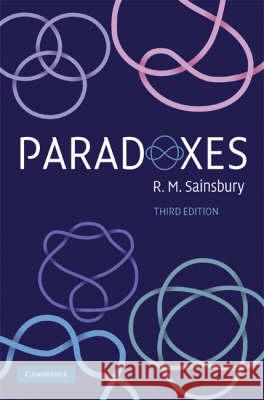Paradoxes » książka
topmenu
Paradoxes
ISBN-13: 9780521896320 / Angielski / Twarda / 2009 / 190 str.
Paradoxes
ISBN-13: 9780521896320 / Angielski / Twarda / 2009 / 190 str.
cena 379,82 zł
(netto: 361,73 VAT: 5%)
Najniższa cena z 30 dni: 332,47 zł
(netto: 361,73 VAT: 5%)
Najniższa cena z 30 dni: 332,47 zł
Termin realizacji zamówienia:
ok. 16-18 dni roboczych.
ok. 16-18 dni roboczych.
Darmowa dostawa!
This intriguing book is not only an explanation of paradoxes but also an excellent introduction to philosophical thinking.











